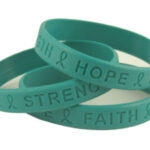 It’s reported that 55% of patients with ovarian cancer acknowledge a fear of dying, and 32% experience loss of hope in their fight against this illness.
It’s reported that 55% of patients with ovarian cancer acknowledge a fear of dying, and 32% experience loss of hope in their fight against this illness.
Researchers at Harvard Medical School, in Boston, examined CAM and its influence on hopelessness in these patients.
First, the details.
- Surveys of 219 ovarian cancer patients undergoing treatment at a cancer center in the United States were analyzed.
- Patients included those with newly diagnosed disease, long-term survivors, and patients experiencing ovarian cancer recurrence.
And, the results.
- Patients 65 years or older with significant and direct reduced hopelessness scores included the following characteristics.
- Strong faith
- Good quality of life
- Massage therapy significantly reduced hopelessness scores
- Employed patients were twice as likely to use massage when age was held constant.
- Patients with newly diagnosed and recurrent ovarian cancer were more hopeless due to greater distress from symptoms and adverse effects of treatment.
The bottom line?
The authors concluded, “Patients who used massage therapy were significantly less hopeless, as were those with strong faith and well-controlled disease symptoms and treatment for adverse effects.”
They recommend that in clinical practice it’s important to support spiritual needs and manage symptoms in order to prevent or at least reduce hopelessness, especially for patients with newly diagnosed and recurrent ovarian cancer.
4/30/13 13:45 JR